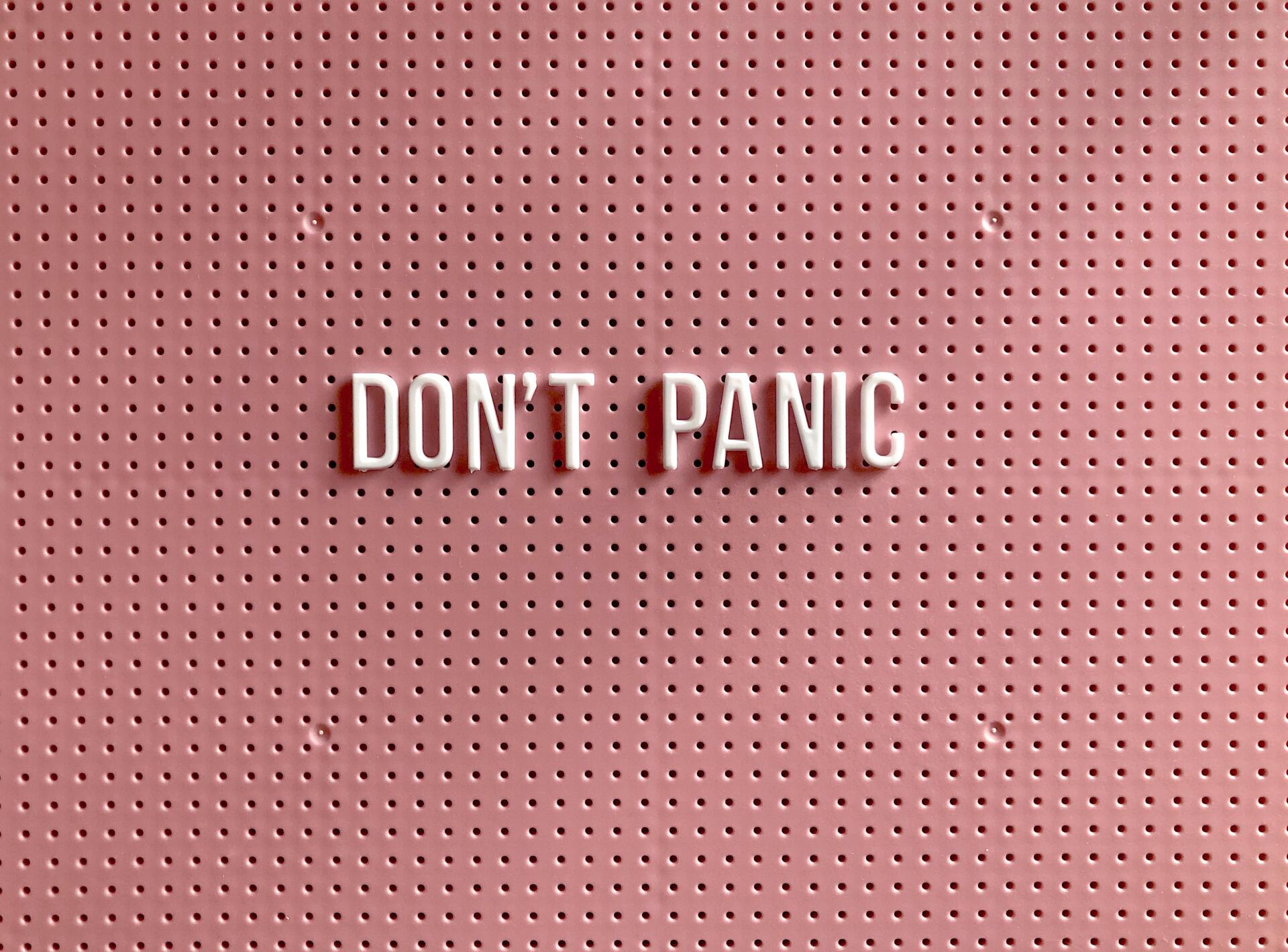If you have experienced a panic attack, you’re not alone.
Up to 30% of people will experience at least one over their lifetime.
Panic attacks tend to be scary and memorable. If you’ve experienced a panic attack before, you probably remember where you were when it happened, whether it was in the middle of the night or on an elevator. Panic attacks are THAT intense!
“I thought I was dying”
“I ended up in the E.R. thinking I was having a heart attack.”
“I was completely paralyzed and disconnected from what was going on around me.”
“It was the most terrifying experience.”
What is a panic attack?
Panic attacks are defined as a very short, and intense burst of anxiety during which at least 4 of the symptoms listed below develop suddenly and reach a peak within 10-15 minutes.
- Racing heart
- Shortness of breath
- Sweating
- Shaking
- Feeling of choking or lump in your throat
- Chest pain or discomfort
- Nausea
- Dizziness
- Numbness or tingling
- Chills or hot flushes
- Fear of losing control of going crazy
- Fear of dying
- Feeling of unreality or “out-of-body” experience
Some of you may have experienced all of the above listed symptoms, others just a few. And while a panic attack is short-lived and most symptoms alleviate within 15 minutes,
it is not unusual to experience residual anxiety for a little while after as your body and mind recover and stress hormones (e.g., adrenaline, cortisol) return to their baseline levels.
Your response to the panic attack may also create additional anxiety. For instance, if your response to a panic attack is
“something is wrong with me”, “I should have been able to handle it better”, “I don’t have time for that to happen now”, you are more likely to experience more anxiety than if you are able to tell yourself
“I just had a panic attack, I am safe, I will take a moment to help my body and mind calm down before I get back to what I need to do.”
Panic attacks, which are physically harmless, can also mimic other conditions, such as
an asthma attack, which need to be treated promptly. Chest tightness is also a symptom shared by both panic attacks and heart attacks, which can further be cause for concern. Knowing the differences and seeking guidance from a healthcare provider is essential to receive proper treatment and manage anxiety.
What causes a panic attack?
A panic attack happens when our “fight-or-flight” response is activated. The fight-or-flight response is the body’s physiological, hardwired way of responding to a perceived threat or danger. In a nutshell, "there's a threat, I need to panic!" While this built-in system is useful when you're in the jungle being attacked by a predator, in the case of panic attacks, it is triggered in the absence of an actual threat (though there might be a stressor). While the trigger of a panic attack may sometimes be obvious, for instance, people reporting that they experience a panic attack every time they have to get on an elevator or a similarly confined space, other times, you may not be aware of what caused it. You may even have experienced a panic attack in the middle of the night, waking you up from a state of deep sleep.
Other situations that can prime the body to activate the flight-or-flight response include intense physical activity, too much caffeine, hyperventilation, environmental changes (e.g., waking into a very stuffy room or walking in the Miami heat in the middle of summer). Symptoms of illness may also induce physical changes that can be perceived as threats and cause a panic attack.
Panic attack vs. panic disorder
How to manage a panic attack
1. Talk to yourself as you ride out the panic attack
Remind yourself that panic attacks are harmless and short-lived. Talk to yourself gently, as you would a friend.
You may repeat to yourself “I am having a panic attack. It is scary but I’ve done it before. I am safe and I can ride it out”, or some version of this that resonates with you. Remind yourself that your symptoms are caused by anxiety and that your body is not made to sustain high levels of physiological arousal. Soon, the symptoms will alleviate.
2. Breathe through it
Hyperventilation is associated with many of the symptoms you will experience during a panic attack (e.g., dizziness, shortness of breath, numbness and tingling in your extremities).
Taking slow, deep breath can help reduce the feelings of panic and return your body to feeling calmer.
Learning
diaphragmatic breathing is a strategy that may help you cope successfully with a panic attack, as you learn to inhale slowly through your nose and exhale through your mouth. While taking deep breath is not rocket science, practicing this skill might require a bit of support to get it right at the beginning. Seeking guidance from a therapist or reviewing a video on diaphragmatic breathing (not in the midst of a panic attack) can help.
3. Become aware of the early signs of your panic response
Becoming more aware of the early signs of anxiety might allow you to prevent your symptoms from turning into a full-blown panic attack. You have the ability to intervene at the first signs that anxiety is creeping up. Think about your most recent panic attack. What were the first symptoms that you notice? Did you notice a tingling in your hands? Do you remember sighing pretty heavily (possibly a sign that you were hyperventilating)? Did you notice a tightness in your chest and feeling short of breath? And if you are unsure of what came first, try and observe your symptoms in the future. Pay attention to the way you feel. If and when you notice anxiety “red flags”, use your breathing skills and other techniques that you might have learned with a therapist to prevent the anxiety from further building up.
When to seek help for panic attacks?
If you are experiencing frequent panic attacks to the point that it’s either causing some distress or impacting your daily functioning, it might be time to seek help to break out of that cycle.
Here are some indications that you might benefit from psychotherapy to manage panic attacks:
- You have been experiencing
frequent panic attacks
and it’s making you increasingly worried
- You are more and more
concerned about experiencing more panic attacks in the future
- You’ve started making some (subtle) changes to the way you function in your day-to-day life as a result of having panic attacks. Maybe
you’re avoiding certain places altogether or only feel comfortable going with someone you trust
- Your panic attacks are
more and more frequent or distressing
-
Someone has suggested that you should be seeking help
- You have been diagnosed with
panic disorder
Panic attacks can be difficult to manage on your own and may get worse without adequate treatment.
The good news is that we know a lot of panic attacks and panic disorder and how to treat them!
Treating anxiety and panic disorder with CBT
Finally, breaking out of the panic cycle also requires to
take a look at how you respond to the panic attack. What thoughts are triggered by your panic attack? How do you interpret your symptoms? Additionally, what are you doing after you have a panic attack? Are you avoiding certain places and situations? Are you modifying your routine to prevent panic attacks from happening? Certain behaviors we think might help with anxiety often can maintain and exacerbate it. Together with your CBT therapist, you will learn to modify your response to panic attacks in a way that allows you to feel more in control.
The goals of CBT for panic disorder include:
- Reducing the frequency and severity of panic attacks
- Making you feel
more in control, confident, and empowered
- Understand the relationship between your thoughts, feelings, and behaviors, and how they might be contributing to maintaining your symptoms
- Allow you to enjoy a range of situations and activities
without having to worry about panic attacks
- Improving your quality of life!
And while it is not a “quick fix”, it is a research-backed treatment that a majority of people tend to benefit from. Yay *happy dance*
Counseling vs. medication for panic attacks
You may be asking yourself if counseling for panic attacks is the way to go or if you should take medications.
CBT is often suggested as the first course of action to treat panic disorder or help with panic attacks (even if you don’t meet full criteria for panic disorder). You don't need to wait for your symptoms to get really debilitating to get help. The earlier you seek help, the shorter the treatment is likely to be, which is likely to increase your quality of life significantly. Certain situations may warrant the use of medications, depending on the severity of symptoms and the presence of other disorders. As always, getting a psychologist or healthcare provider on board to make recommendations is best!
Hi, I’m a Miami therapist who treats
anxiety and panic disorder. I am trained in CBT and I have helped many, like you, who no longer wanted their panic attacks to be in the driver’s seat of their life.







